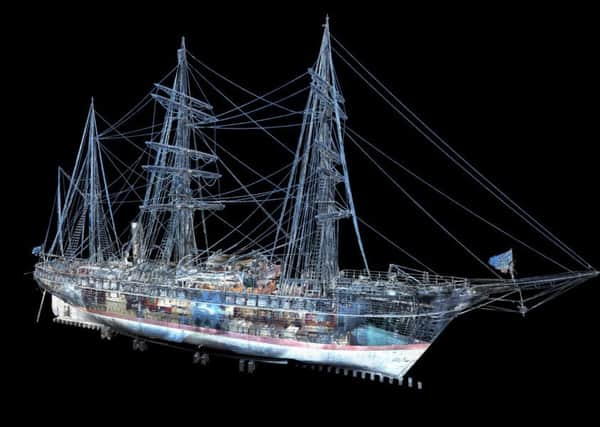Museums now able to set sail on wave of technology


Each year, thousands of objects from Scotland’s museums are becoming available for us all to access with a click of a mouse. The digitisation of collections offers incredibly exciting opportunities for museums to explore new ways of engaging with their visitors. In order to make most of these opportunities Museums Galleries Scotland (MGS) encourages and supports the sector in planning how their digitised content will be used and shared in the future.
Museums are homes to an incredible amount of inspirational objects. This rich content offers huge potential for museums to work with organisations who have the technical abilities to present the collections in creative and innovative ways. We want the sector to see how technology can add to our collections knowledge and core purpose of a museum.
Advertisement
Hide AdAdvertisement
Hide AdA great example of this kind of collaboration is the recently launched Edinburgh Up Close project. It taps into bluetooth signals mapped along the Royal Mile to “push” snippets of history to users’ devices. The information is accessible to all ages, abilities, and sight and hearing impaired users. The project extends the reach of a number of museums, including the Museum of Edinburgh and Museum of Childhood, to people walking along the Royal Mile.
MGS supports museums to get involved in the Smart Tourism programme, which brings together Scottish university informatics and computing science research and tourism organisations to develop their use of technology. This means that museums are helping to lead the way in adapting cutting-edge technology to augment their visitor experience. Dundee is the birthplace of the Scottish games industry so it is apt that Dundee Heritage Trust is adopting the latest gaming technology to digitise the RRS Discovery and create the most realistic 3D virtual tour of an historic vessel in the world. The project prototype allows people to explore the ship, sit at a table and take a peek in Shackleton’s sleeping quarters and future possibilities include walking the decks and climbing the rigging. While the primary aim of the project was to get a detailed record of Discovery’s structure to inform conservation planning, Dundee Heritage Trust has seized this valuable opportunity to share its knowledge of the iconic ship with the public.
A well-planned digital project like this can raise the profile of the museum. The Brooklyn Museum in New York was a frontrunner in opening up the content of its collections online and they gained massive publicity in doing so but it can be quite a culture change for a museum to open up access in this way. There is a growing public appetite and expectation for free online access to information and for the public to participate in museums online. To encourage and facilitate the sector to embrace this culture change of a culture of open knowledge, MGS is hosting a Wikimedian in Residence to work with Scotland’s museums. By making information about collections available through Wikipedia, museums have the opportunity to engage a huge national and international audience – Wikipedia pages containing images donated by the National Library of Scotland currently attract around 1.2 million views per month. There can be fears about losing control of the information once it goes online but by creating their own Wikipedia pages curators ensure that the information available about the objects in their care is accurate and up to date. Using the knowledge and expertise contained within our museums to contribute to sites like Wikipedia should be seen as an extension of outreach work.
The idea of sharing information for free can cause anxiety when organisations are under increasing financial pressure. Museums and galleries also need to consider areas such as intellectual property and the copyright of artists’ work. However, digital technology should still be viewed as a chance to explore new ways of working. MGS supports the sector in tackling the challenges and barriers they may encounter. Our Digital Transformation Network allows museums to discuss these issues as well as consider the opportunities that are opening up to them. While you can never replicate the experience of seeing the real thing, digital advances are bringing our museum treasures into homes and schools around the globe. As custodians of our heritage, museums have a responsibility to make Scotland’s collections as open as possible.
• Joanne Orr is chief executive officer of Museums Galleries Scotland. Museums Galleries Scotland is the national development body for Scotland’s museums and galleries, www.museumsgalleriesscotland.org.uk